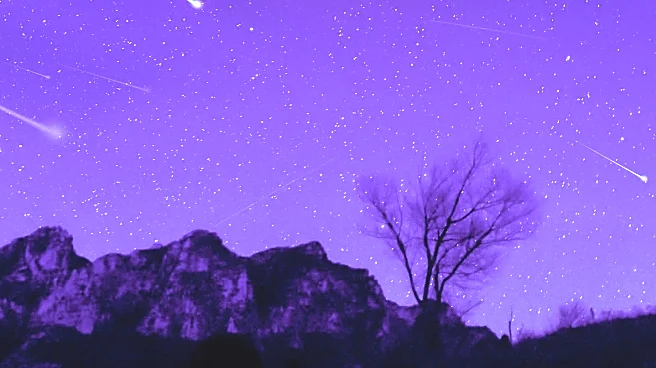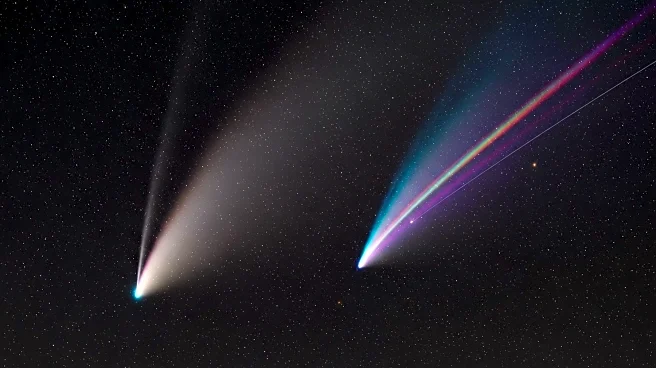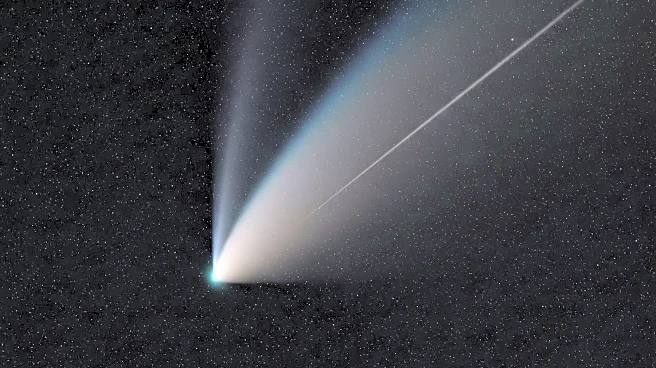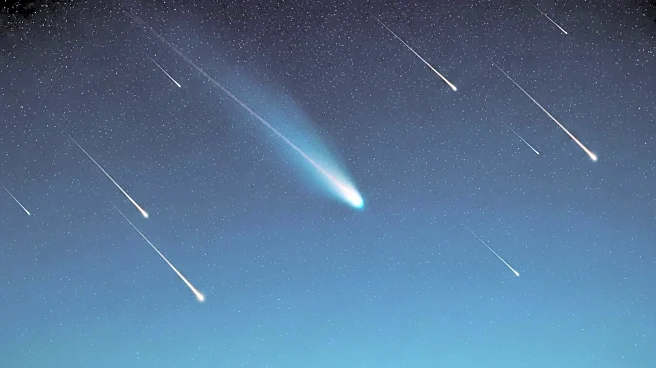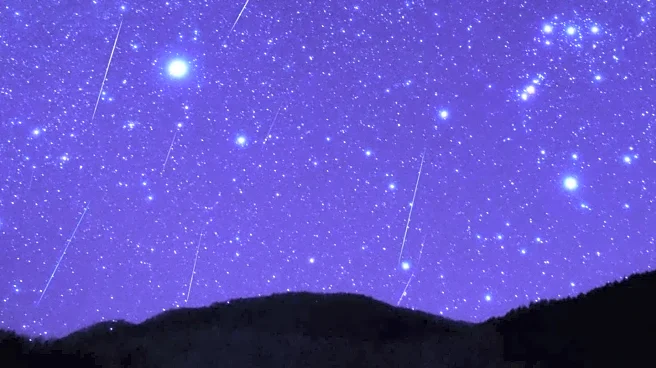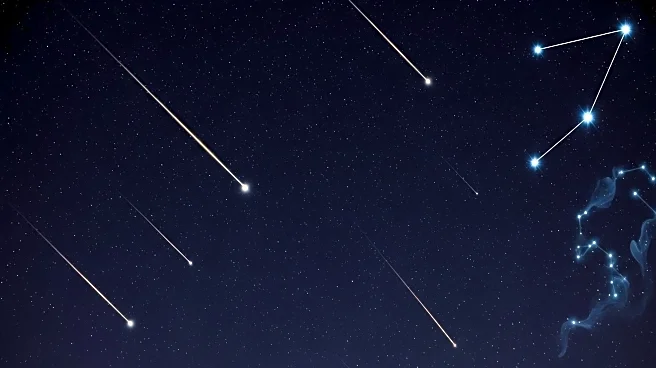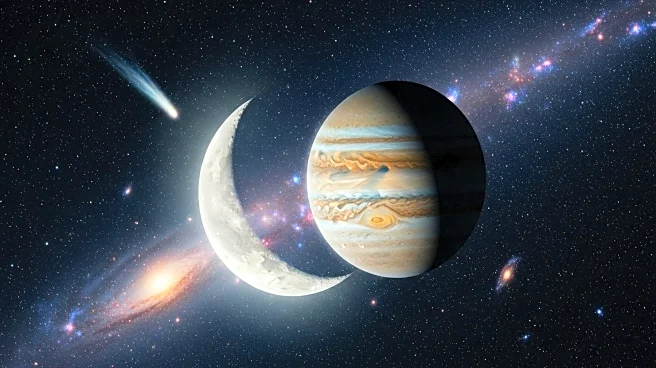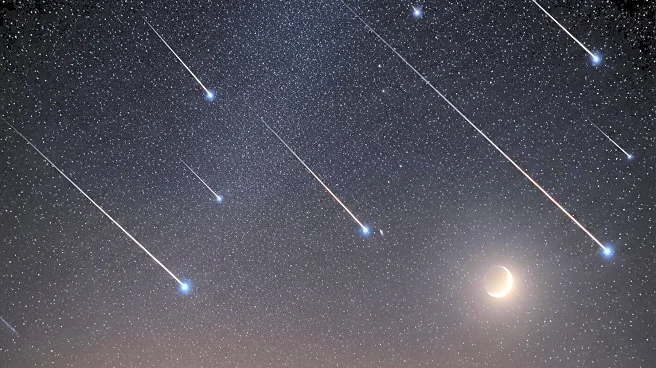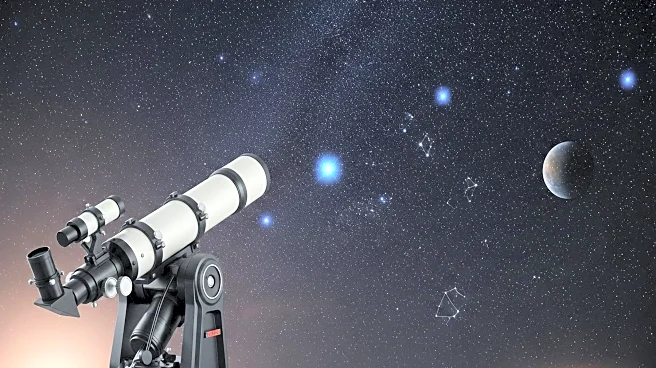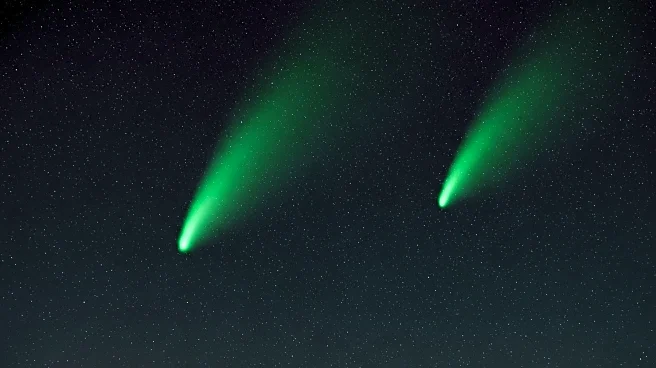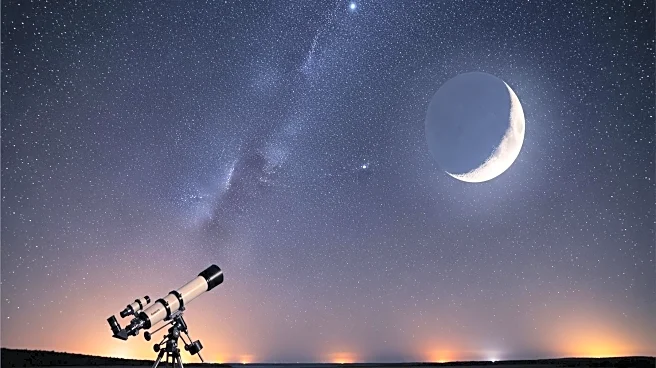What is the story about?
What's Happening?
This October, stargazers are in for a celestial treat as two comets, SWAN and Lemmon, along with the Orionid meteor shower, are set to light up the night sky. The comets, discovered earlier this year, will be visible as they approach the sun, releasing gas and dust that create their distinctive trails. SWAN will come within 24 million miles of Earth, while Lemmon will be 55 million miles away, with both potentially visible simultaneously around Halloween. The Orionid meteor shower, peaking on the night of October 20-21, will add to the spectacle, offering a dazzling display for those who find dark skies and allow their eyes to adjust.
Why It's Important?
These astronomical events provide a unique opportunity for public engagement with science and nature, encouraging people to step outside and appreciate the wonders of the universe. Such events can inspire interest in astronomy and science education, potentially influencing future generations to pursue careers in these fields. Additionally, they offer a moment of respite and awe, fostering a sense of connection to the larger cosmos, which can be particularly meaningful during times of societal stress or uncertainty.
What's Next?
As the comets and meteor shower approach, astronomy enthusiasts and educators may organize viewing events or provide guidance on how best to observe these phenomena. Public interest in astronomy could lead to increased participation in local astronomy clubs or educational programs. Furthermore, scientists may continue to study these comets to learn more about their composition and behavior, contributing to our understanding of the solar system.
Beyond the Headlines
The visibility of these celestial events highlights the importance of preserving dark skies, which are increasingly threatened by urban light pollution. Efforts to reduce light pollution not only enhance the visibility of astronomical phenomena but also benefit ecosystems and human health. This underscores the need for policies and practices that protect natural night environments.
AI Generated Content
Do you find this article useful?
